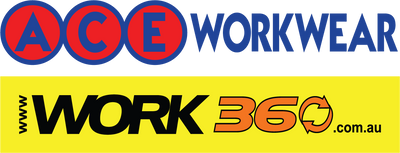Construction sites are full of risks and dangers, but the work is often essential. The employees who do construction work require protective equipment as mandated by Safe Work Australia, a requirement intended to both protect employees from injuries and employers from litigation. So if you are an employer, learn about five types of equipment that your workers need.
1. Eye protection
Whether your project involves flying particles while making large earthworks or potentially damaging tools like sandblasters, construction workers need to protect their eyes. Even small intrusive particles can temporarily or, in extreme cases, permanently affect eyesight, which can put performance and site safety at risk.
Eye protection comes in many forms, from slip-on glasses that provide a wide barrier against debris to more secure goggles that promise to stay on no matter what. Depending on the specific worker's duties, one might be more appropriate than the other, but a supply of both will ensure that you can provide employees with ample eye protection.
2. Earplugs
You might not consider noise to be as risky as flying projectiles, but 18 percent of deafness claims in Australia between 2001–02 and 2014–15 were made by construction workers. Hearing is vital for safety and communication on a construction site, and loud machinery and construction noises can put that hearing at risk.
Ear protection like earplugs and earmuffs can slow and even stop hearing damage. They come in both disposable and reusable forms and come in various materials for different levels of hearing protection. The loudest of situations can benefit from a combination of both plugs and muffs and ensure complete protection.
3. Hard hats
Hard hats are the quintessential form of personal protective equipment. These iconic hats do more than just advertise the wearer's status as a construction professional. They protect from debris, equipment and falling accidents that might occur. Even visitors to construction sites should wear them in case of mishaps that could otherwise cause concussions, neck and spine injuries and other head injuries.
Hard hats are also great for visual safety. They often come in bright visible colours like yellow, orange and neon variants, which means that other workers and equipment operators are more likely to see their coworkers and navigate around them safely.
4. Sun protection
Many construction projects involve long hours outdoors, which puts workers at the mercy of the sun. Prolonged sun exposure results in sunburns, dehydration, heat exhaustion and even increased risk of skin cancer. Sun protection is good for both short- and long-term safety. Long-sleeved shirts and trousers, hats, sunglasses and shoes without gaps can limit exposure, but the best protection comes with sunscreen.
High-quality, broad-spectrum sunscreen with a high SPF factor can block harmful UV rays that burn skin and can even penetrate clothing. As an employer, provide ample sunscreen for workers so that employees can reapply regularly for maximum protection.
5. Protective clothing
What your workers wear is just as important as the rest of their personal protective equipment, and the safest options might change depending on the season. For winter projects, for instance, sturdy boots and waterproof warm coats provide protection from cold temperatures and hypothermia, while in the summer, their workwear should offer sun protection and be breathable as well.
In the end, your employees' safety means more successful projects and fewer delays. Keep your construction workers safe with the right equipment, and you'll see the benefits.
If you want to learn more, contact Ace Workwear for more information about personal protective equipment for your workers. We provide clothing and equipment for any type of job that can bring you and your employees peace of mind.



